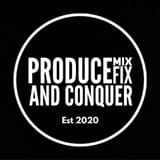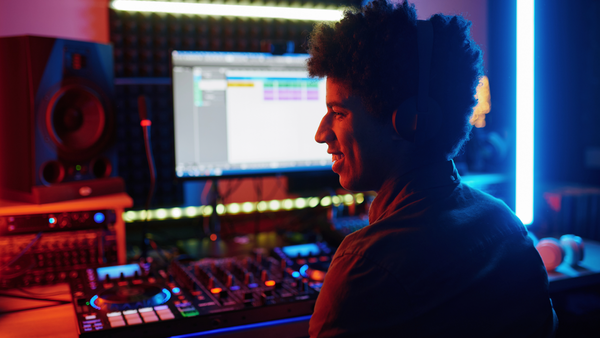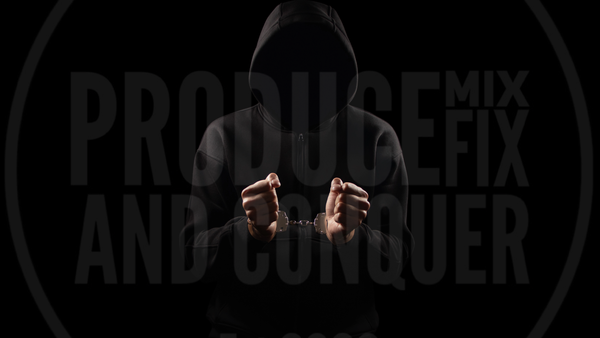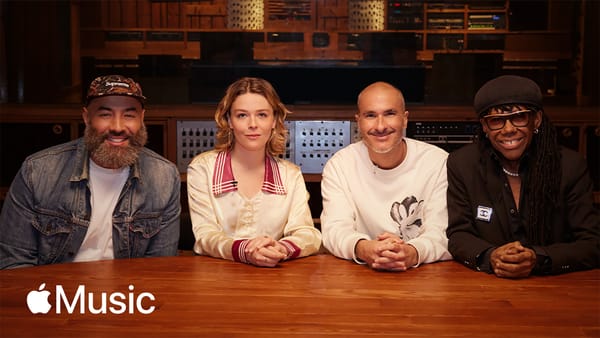The Lost Art Of Not Having Enough - By Bob St John
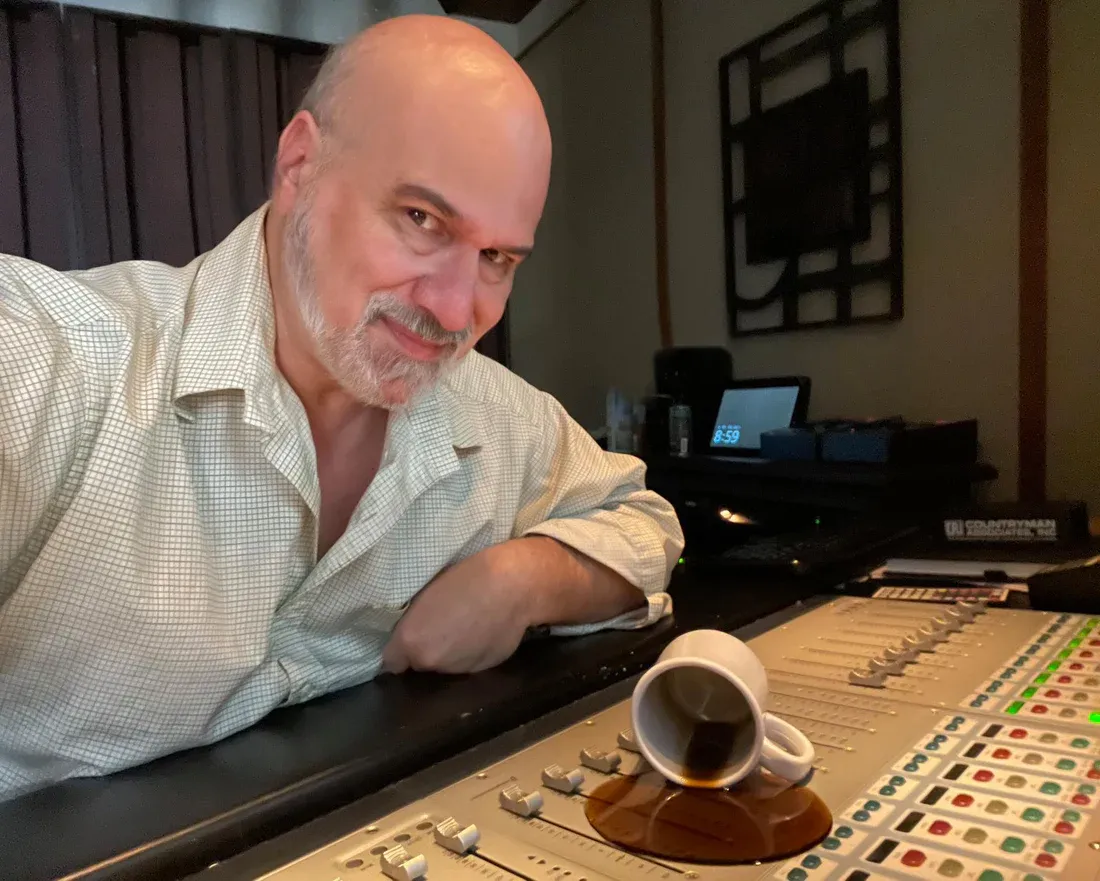
In these days of hundreds of plug-ins, preamps, microphones, converters and associated stuff…I feel we now have an entire generation of engineers who may not know the useful challenge of not having enough.
You see, sometimes too many options allow one to sacrifice on the recording end, instead opting to “fix it in the mix” (totally cliche, I know) or not get up and move a microphone because they’re dying to trying out a new plug-in. Now, in my once upon a time (1982, to be exact), there were no such things as Sweetwater, Vintage King or Amazon. There was no YouTube.
Just the issues of Mix, Recording Engineer/Producer and DB magazine when we could find them. Most of the music stores didn’t carry the more expensive hardware…and unless you could convince a studio manager that you weren’t going to blow out their UREI 813’s leaving a mic channel open when you unplugged it…you weren’t going to be able to put your hands on any of that gear, either.
So…we had to learn this stuff the old fashioned, hard way…
Now…if any of you have heard any of the dozen or so podcasts I have been featured in, you already know how and where I got my start…so I won’t go back over it here. But I wanted to be a recording engineer SO badly…that I would build equipment, not because I was good at it (I really wasn’t) but because I couldn’t afford anything else. Using a Radio Shack “integrated circuits projects” books, I created microphone preamps, drivers and preamps for spring reverbs (that I hacked out of broken guitar amps) a mixer, and headphone amps. 9 volt batteries were my personal god. And EVERYTHING ran on them.
Later, I would quit college and go to technical school, to get a regular day job…so I could afford to open my own studio. Until then? I dragged that 60 pound Tascam 80-8 from one house to another...just so i could record my friends.

(Late Summer, 1983. Note: Radio Shack Headphone amp, on top of Radio Shack 6 band Graphic EQ, on top of Tascam 80-8. DBX 165a and Ashly Parametric EQ in rack...one speaker for listening back to tracks (not pictured, Tapco 6200B mixer)

I was so desperate to learn...and i still have NO idea where i got the thing, but what i would do, is bring in the outputs of tracks 1 and 2 from the tascam (my bounced music stem) and use the rest of the faders for recording and mixing.
One would think…well, okay, THEN you learned how to use the “pro” stuff, right?
Not so fast. I took out a modest loan, to build a studio in an all-too-large space, and some peculiar gear choices. Believe it or not, I had a Studio Technologies Ecoplate II (plate reverb). But the centerpiece of the studio…was the console, a Ramsa (Panasonic) WR-8816.

With a quasi-parametric eq, and some pretty shitty mic preamps, I was up and running. I was even able to patch around the 16 channel monitor section to use then as returns and extra faders (in working with 8 track, i would double patch channels so i could get different eq's on the same track).This alone…taught me how to use my meager microphone collection (An Electrovoice 667a, RCA 77DX (both found in the trash in college (not kidding) Electrovoice PL-78 (a handheld condenser mic…back in ’83, It was exotic), one Sennheiser 421, Shure SM57 and a few Audio Technica condenser mics). I learned how to make choices based on what microphone best complimented which instrument, and I quickly learned what worked and what didn’t. Add to that a total of three pieces of outboard gear (a DBX-165a (bought it with my work study income instead of books), an Ashly dual parametric EQ, and a delta lab effectron delay. I used the 165a on many things I recorded, the Ashly on kick and snare (which I would bounce down along with the overheads and toms). On good days, I could rent a Lexicon 224 or 224x to use on my stereo reductions of drum tracks. Working with 8 tracks…I was required to make guesses on what two channel mixes to commit to (typically, I’d record drums and bass on 5 tracks, then bounce the drums down to two tracks (typically with the 224 reverb on it). Often, I’d put drums and piano together on a pair of tracks in a reduction/bounce as well. There were no other options, and with 8 track, you always had to make sure to not be bouncing to an adjacent track, as it would interfere with the audio quality in the bounce. So to say it was challenging…would be an understatement. again…by not having the extra tracks? It forced me to learn how to make conjectures on how loud instruments would need to be relative to each other in a stereo reduction. And of course, never forget, that in analog? Even one bounce degrades the audio quality…so you had to be able to do these things on the first try. No undo. No playlists.

For me? This limitation shaped me into the engineer I am now. And because all I had to work with was 8 tracks of 1/2 inch analog, it forced me into understanding how to make reductions that worked from tracking to mixing. Because way back when, even in a larger studio, you were lucky if you had two or three good compressors, or good outboard eq’s or more than one reverb. Otherwise? You made it work. And honestly…as engineers, at our core? THIS is our job. NOT to whine, complain or dream about what we could do if we had the one more piece of outboard gear, or classic vintage microphone, or plug in. But to find solutions to giving our clients what they are looking for. We are…problems solvers…and on the best days? Dream makers.
Don’t get me wrong…I love plug-ins…and all that they bring. But they can be downright distracting to a work flow…especially when you should be out in the room, changing mics, moving mics or figuring out which position works best for the performance.
The things we have at our disposal now…I couldn’t have dreamed of. But then, I would never have dreamed that 15 years later, I would use that Ramsa console to record drums on a Duran Duran track (“Who Do You Think You Are?” (On Medazzleland)
Why do I mention this at all?

I mix hundreds of tracks each year. And I am given all assortment of home recordings (with the way home recording has exploded in the past 10 years, it’s become exceedingly rare that I get tracks recorded in an actual brick and mortar studio) and clients always ask me about their tracks. And I always find myself giving the same advice: Get a good microphone, a good preamp and converters. Get good performances. And let a professional do the rest. Forget about the plug-ins…and spend time creating. There will always be time to tinker with the latest plug-in…but in the end? If you spend all of your time tinkering, you’ll be missing the best part of this art…
And that is capturing great music…and of course, to discover your own recording environment (which I will be detailing in future posts…for recording in our homes gives us some unique acoustics we can use to our advantage)
So…my sage advice? Keep it simple. Move the mics…not the knobs :) http://www.bobstjohn.com

